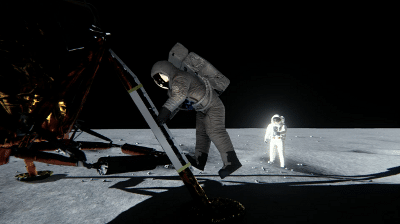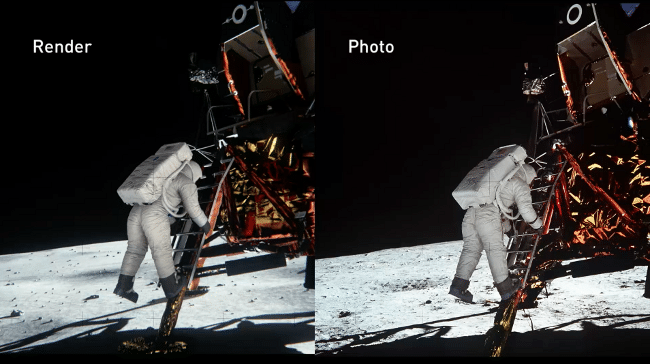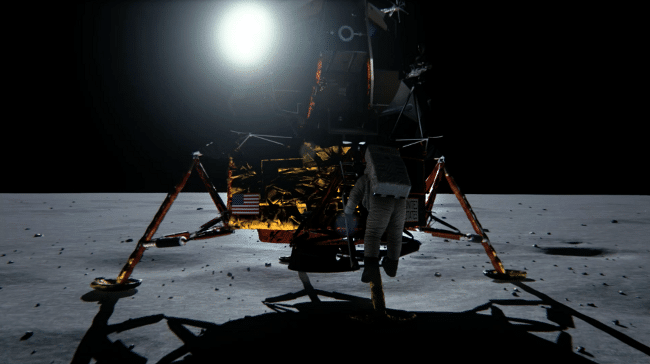
Our demo team last month used Maxwell, our new GPU architecture, to bust a well-known conspiracy theory about the Apollo 11 moon landing. Today, we’re releasing the software we used to do it.
Forty-five years ago, Neil Armstrong captured a photo of Buzz Aldrin clambering down the lunar module’s ladder. Conspiracy theorists say the photo, which shows Aldrin lit up against the dark shape of the lander, doesn’t look quite right.
Some even say legendary director Stanley Kubrick – best known for “2001: A Space Odyssey” – worked with NASA to fake the moon landings.
Not so. Our software provides proof that the iconic photograph is authentic. In a demo powered by Epic’s Unreal Engine 4 and Maxwell, we showed how light from the moon’s surface – and astronaut Neil Armstrong’s space suit – illuminated Aldrin.
But some conspiracy theorists aren’t buying it. One man has even used a cardboard box placed over asphalt and tiny models of the lander and an astronaut to recreate the landing.
You can do better. More importantly: you’ll have fun doing it.
If you’ve purchased our new Maxwell-based GeForce GTX 980 and GeForce GTX 970 GPUs, download our demo.

You can view the scene with direct and indirect lighting. They can toggle on Armstrong to see how his spacesuit affects the play of light. Or they can shift the position of the sun or the camera. They can even adjust the camera exposure.
Guiding Light
Our demo hinges on one of the key technologies unleashed by Maxwell and Epic’s Unreal Engine 4. VXGI – or Voxel Global Illumination – shows the way light bounces from one object to another in real time. To do that, VXGI breaks a scene’s geometry into many thousands of tiny boxes called “voxels,” or 3D pixels.
The GPU analyzes the six sides of each box to determine how transparent it is, and how much and what color of light it reflects from other objects in a scene.
Using VXGI, our demo lets you reconstruct the way light moved around the Apollo 11 landing site.
Seeing More
That isn’t the only proof you’ll be able to find for the landing in our demo.

Another detail from NASA’s photos seized on by skeptics: pictures from the landing site don’t show any stars. The government left out the stars in the scene, they say, because it would be impossible to show the position of the stars from the moon.
Using our demo you can find those stars by changing the exposure of the photos.
Eyes Wide Shut
To be sure, satisfying those who think the Apollo 11 landings are a hoax will take more than software. Conspiracy theories spring from deep human biases, explains Timothy Melley, a professor at Miami University of Ohio and author of “Empire of Conspiracy: The Culture of Paranoia in Postwar America.”
Most conspiracy theorists aren’t crazy, or foolish. But theorists take a good thing – skepticism of authority in a society where everyone is selling something – and mix it up with the idea that everything is the result of a person with a plan, Melley says.
“People like to conserve the idea of a willful agent as the source of everything good and bad that happens in the world – and that’s not a good explanation,” Melley says.
So we won’t convince everyone. But with our demo, we’re putting the power to come up with a better explanation into the hands of millions of people.
Should we consider this conspiracy theory debunked? Download our demo and decide for yourself.